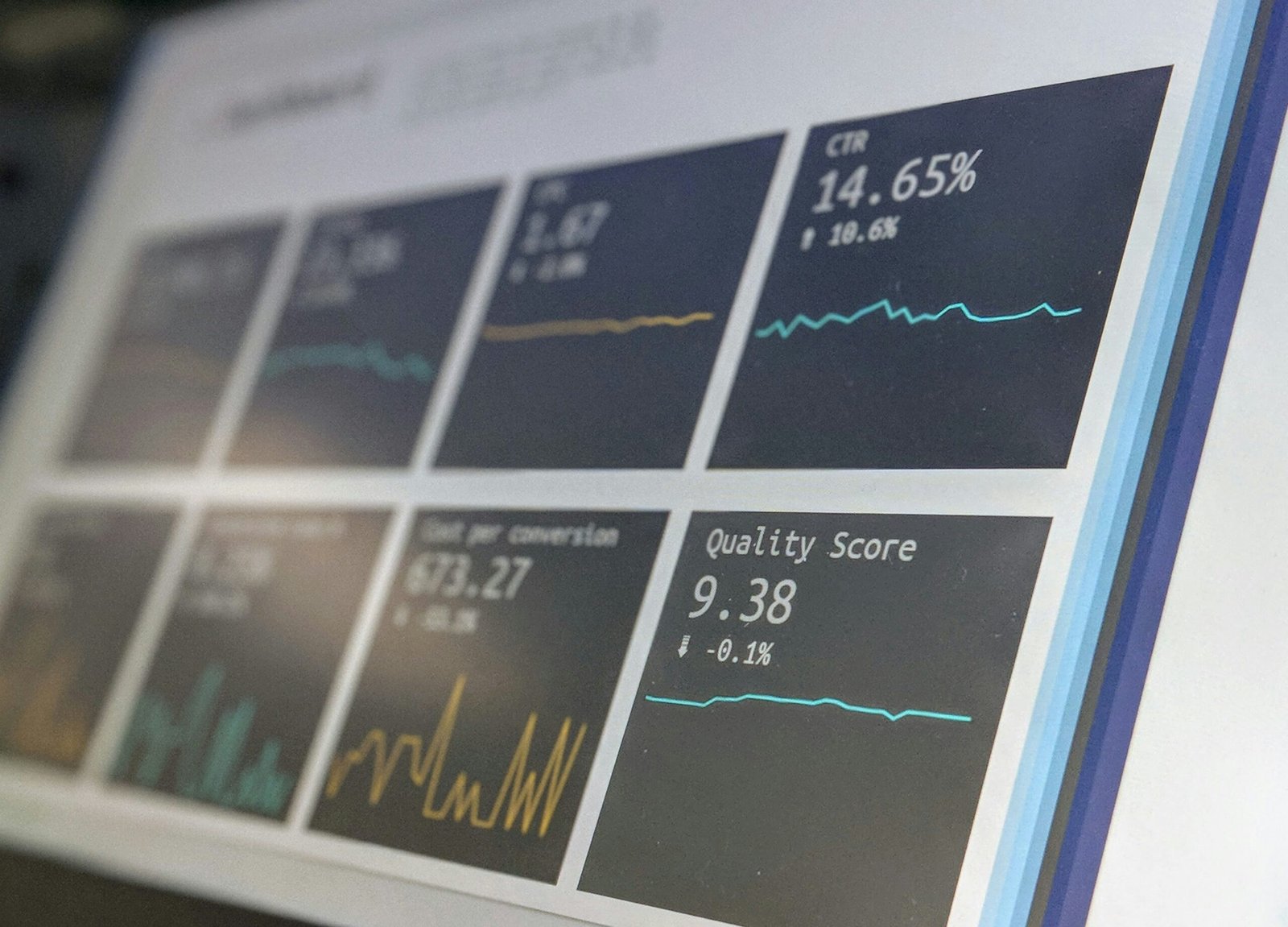Introduction to Import Data
Import data refers to the detailed records of goods and services that are brought into a country from abroad.
This data encompasses various aspects, including the types of products being imported, the quantities, the countries of origin, and the values associated with these transactions.
The significance of import data in the global trade landscape cannot be overstated. It serves as a vital resource for businesses, policymakers, and researchers, providing them with insights into market conditions, competitive dynamics, and logistical considerations.
The types of data typically collected during the import processes include shipment details, Customs records, and statistical information regarding international trade agreements.
Additionally, many businesses utilize import data to identify trends related to consumer demand and market opportunities.
By analyzing this information, organizations can gain a competitive edge, adjust their strategies, and optimize their supply chains accordingly.
Global trade databases, government trade authorities, and private analytics firms are among the sources that provide access to such valuable import data.
For businesses, accurate and timely import data is crucial for effective decision-making.
It facilitates informed choices about product sourcing, pricing strategies, and market positioning.
The relevance of import data extends beyond simple inventory management; it is instrumental in risk assessment and compliance with international trade regulations.
Companies can use this information to identify potential disruptions, evaluate supplier reliability, and enhance overall operational efficiency.
As firms continue to navigate an increasingly complex global market, leveraging the insights gleaned from import data will be essential for growth and sustainability.
The Role of Import Data in Identifying Market Trends
Analyzing import data can serve as a vital tool for businesses aiming to discern market trends and gain a competitive edge.
This data encompasses detailed information about the goods flowing into a country, providing insights into various aspects of international trade.
By utilizing this information, companies can identify shifts in consumer preferences, emerging trends in product demand, and changes in supply chain dynamics.
One effective methodology for analyzing import data is the application of time-series analysis.
By examining historical import patterns, businesses can pinpoint fluctuations in demand for specific products over time.
For instance, steady increases in the importation of eco-friendly packaging materials may indicate a growing consumer preference for sustainable products.
Companies can leverage this pattern to adjust their strategies, perhaps by incorporating more sustainable practices in their product offerings to align with consumer demand.
Another approach includes conducting comparative analysis between different regions or countries.
By assessing the importation patterns from various sources, firms can identify which markets are experiencing growth in particular categories.
For example, if import data shows a significant uptick in electronics coming from a specific country, it may suggest that the region has become a hub for high-tech innovation.
This understanding allows businesses to adapt quickly and reposition their product lines or marketing strategies accordingly.
Furthermore, import data can assist organizations in anticipating supply chain disruptions.
By monitoring trends in international shipping and import volumes, businesses can predict potential shifts in availability, pricing, and sourcing strategies.
For example, if import volumes for a particular component decrease due to geopolitical tensions, companies can proactively seek alternative suppliers before stock levels decline.
In essence, through the systematic analysis of import data, organizations can develop a clearer understanding of market dynamics.
This information becomes instrumental in guiding business decisions, enabling firms to act decisively to capitalize on new trends and remain resilient in a constantly evolving marketplace.
Leveraging Import Data for Competitive Advantage
In today’s fiercely competitive marketplace, businesses are increasingly turning to import data as a means to gain a strategic edge.
By analyzing import statistics, organizations can identify trends, understand market needs, and forecast demand with greater accuracy.
This data offers insights into competitors’ strategies, pricing models, and sources of supply, allowing businesses to structure their own responses effectively.
One effective strategy is the development of competitive pricing mechanisms.
By examining the import pricing patterns of competitors, companies can adjust their own pricing strategies to remain competitive.
For instance, if an analysis of import data reveals that a rival has significantly lower costs due to efficient sourcing, companies can reconsider their supplier relationships or invest in negotiation tactics to enhance their cost-effectiveness. In this way, import data acts as a catalyst for informed pricing decisions that can lead to increased market share.
Beyond pricing, organizations can leverage import data to inform their market entry strategies. Insights regarding the volume and origins of imports in specific regions can reveal uncharted market opportunities.
By understanding where products are trending and identifying gaps in the market, businesses can tailor their entry strategies to focus on the most promising segments.
Such proactive decision-making enhances brand positioning and establishes a foothold in the local economy.
Inventory management also benefits significantly from the analysis of import data.
Knowledge of incoming product volumes and delivery timelines can optimize stock levels and reduce holding costs.
When businesses align their inventory strategies with data-backed forecasts, they mitigate risks associated with overstocking or stockouts, thus improving operational efficiency.

Ultimately, by utilizing import data effectively, organizations can enhance their decision-making processes and drive competitive advantage.
Embracing data-driven strategies empowers businesses to stay ahead of market shifts and customer demands, paving the way for sustained growth and profitability.
Case Studies of Successful Businesses Using Import Data
Numerous organizations have harnessed the power of import data to refine their decision-making processes, leading to improved operational efficiency and increased profitability.
In analyzing these case studies, we can identify common strategies and notable outcomes that illustrate the importance of data-driven decisions.
One notable example is a prominent consumer electronics company that relied heavily on import data to analyze competitor activities.
By monitoring the volumes and sources of imported electronics, the company was able to identify emerging trends and make timely adjustments to its product offerings.
This proactive approach not only helped the business maintain its market position but also resulted in a 15% increase in sales within a year.
The ability to pivot swiftly based on real-time import data exemplifies how critical timely insights can be.
In another instance, a mid-sized clothing retailer utilized import data to streamline its supply chain operations.
Prior to accessing detailed import statistics, the company faced challenges in forecasting demand accurately, often resulting in overstock or stockouts.
By analyzing patterns in import volumes and key supplier performance, the retailer improved its inventory management processes. Consequently, they achieved a 20% reduction in holding costs while simultaneously maintaining a higher service level.
This case clearly illustrates how import data can directly influence operational performance and financial outcomes.
Moreover, a leading food and beverage company leveraged import data to expand into international markets.
By understanding import tariffs and regulation changes in target countries through comprehensive data analytics, the company devised an effective market entry strategy.
This innovative approach not only minimized risks but also maximized potential returns, leading to a successful launch and subsequent market share acquisition in newly entered regions.
These case studies serve as practical evidence that employing import data can lead businesses to make more informed decisions and adapt to the changing market landscape.
By understanding the strategies employed and outcomes achieved, businesses across sectors can glean insights into the substantial benefits of leveraging import data for enhanced decision-making.
Challenges in Analyzing Import Data
Analyzing import data presents a myriad of challenges that businesses must navigate to make informed decisions. One of the primary obstacles is data accuracy.
The reliability of import data is crucial, as any discrepancies can lead to misguided decisions.
Data may be subjected to various interpretations, and if businesses rely on flawed information, it can result in operational inefficiencies and financial losses.
Ensuring that data is both complete and accurate involves rigorous validation processes, which can be resource-intensive.
Another significant challenge is data overload. With the vast amounts of data available related to imports, companies often find themselves inundated, making it difficult to distill meaningful insights.
This overwhelming influx can impair decision-making processes, as stakeholders may struggle to identify key trends amidst the noise.
Furthermore, without effective data management practices, the risk of overlooking critical information increases, thereby complicating the overall analysis.
Integration with existing data systems poses yet another hurdle for businesses analyzing import data.
Many organizations operate with disparate systems that lack interoperability, complicating the consolidation of import data with other relevant datasets.
This fragmentation can lead to challenges in obtaining a unified view of operations, which is essential for comprehensive decision-making.
Therefore, a seamless integration process is necessary to form a holistic understanding of the data landscape.
To address these challenges, businesses can adopt technology solutions such as advanced analytics tools that streamline data processing and improve accuracy.
Additionally, implementing standardized methodologies for data collection and analysis fosters consistency and reliability.
By embracing these best practices, organizations can enhance their ability to analyze import data effectively, ultimately leading to more informed and strategic decisions.
Tools and Technologies for Import Data Analysis
In today’s data-driven landscape, businesses increasingly rely on import data to inform their decision-making processes.
To effectively analyze this data, a variety of tools and technologies specially designed for data analysis can play a crucial role.
Organizations can choose from various software solutions, data visualization tools, and analytical frameworks, each tailored to meet specific business needs and objectives.
Software solutions such as Microsoft Excel, Tableau, and R are widely used for import data analysis.
Excel is particularly favored for its accessibility and versatility, allowing users to perform statistical analysis and create pivot tables for in-depth insights.
Tableau, on the other hand, is renowned for its powerful data visualization capabilities, enabling users to create interactive dashboards that provide a clear understanding of complex data sets.
Meanwhile, R is preferred for its advanced statistical tools, making it useful for more sophisticated analyses.
Data visualization tools play an essential role in transforming raw import data into easily interpretable visual formats.
Tools such as Power BI and Google Data Studio allow businesses to visualize trends over time and identify anomalies across their import data, facilitating better decision-making.
These platforms enable users to connect various data sources, ensuring that the analysis is as comprehensive as possible.
When selecting the right tools for import data analysis, businesses should consider several factors, including the scale of data, the specific analytical requirements, and integration capabilities with existing systems.
Additionally, it is vital to assess the learning curve associated with each tool, as well as the level of technical support provided.
By leveraging the right technologies, organizations can enhance their ability to analyze import data effectively and make informed business decisions.
The Future of Import Data Analytics
The realm of import data analytics is on the brink of significant transformation, largely driven by advancements in technology and evolving global trade dynamics.
As businesses increasingly rely on data-informed decisions, the methodologies utilized for collecting and analyzing import data become crucial.
Machine learning and artificial intelligence (AI) are set to be at the forefront of this evolution, enabling more sophisticated models for predicting trends, assessing risks, and optimizing supply chains.
One of the most notable trends is the growing integration of big data technologies that facilitate the gathering and processing of vast quantities of information in real-time.
Companies will have the ability to harness data from multiple sources, including IoT devices, blockchain technology, and advanced analytics platforms.
The convergence of these technologies will empower businesses to gain deeper insights into customer behaviors, operational efficiencies, and market demands, all rooted in comprehensive import data.
Furthermore, the increasing complexity of global trade will add layers of nuance to import data analytics.
Changes in trade policies, tariffs, and geopolitical developments necessitate agile frameworks for data interpretation and analysis.
Businesses must adapt to these dynamics by employing predictive analytics tools capable of navigating such complexities.
This not only helps organizations anticipate disruptions but also supports strategic decision-making aligned with market conditions.
As we look towards the future, it is evident that the use of import data will evolve beyond basic reporting into a predictive and prescriptive framework that drives competitive advantage.
Organizations that strategically invest in data analytics technologies and frameworks will be better equipped to make informed decisions, respond to market shifts, and ultimately thrive in an increasingly complex global landscape.
The ongoing development in analytics will redefine how companies view import data, transforming it into a critical asset for effective decision-making.
Best Practices for Using Import Data to Drive Decisions
Effectively leveraging import data can significantly enhance a business’s decision-making capacity.
To maximize its utility, organizations must adopt certain best practices in data collection, analysis, and integration into business strategies.
First and foremost, it is crucial to establish a systematic approach to collect import data that is both accurate and relevant to the business context.
This may involve utilizing automated tools or software that ensure real-time data acquisition, thereby minimizing human error and allowing for a more accurate assessment of trends.
Once the data is collected, the next step involves employing robust analysis methodologies.
Businesses should adopt quantitative and qualitative analytical techniques to derive insights from the raw data.
Employing statistical software for advanced data analysis can help identify patterns, correlations, and trends that might not be immediately apparent.
Additionally, visualizing import data through graphs and dashboards can facilitate better comprehension and communication across all levels of the organization.
Integration of import data into business strategies is another essential practice. It is important for decision-makers to employ the insights gained from import data during strategic planning sessions.
This alignment ensures that the decisions made are informed by real-world data, allowing organizations to anticipate market changes and customer demands more effectively.
Furthermore, continuous monitoring of import data is vital for maintaining a competitive edge.
Establishing key performance indicators related to import activity allows businesses to evaluate performance and make necessary adjustments in real time.
Consistently revisiting and recalibrating strategies based on the latest import data reinforces a proactive approach towards decision-making and adaptability in a rapidly changing environment.
Conclusion: The Strategic Importance of Import Data
In today’s competitive business landscape, the strategic importance of import data cannot be overstated.
Organizations that harness the power of data importation not only gain insights into their operational workflows but also enhance their decision-making processes.
By systematically importing relevant data, businesses can uncover trends, identify potential market opportunities, and understand customer preferences more profoundly.
This data-driven approach transforms raw information into actionable intelligence that guides strategic planning and resource allocation.
The effective management of import data allows companies to improve their supply chains by offering visibility into inventory levels, shipment status, and supplier performance.
Understanding these dynamics plays a pivotal role in managing costs, optimizing logistics, and ensuring that products are delivered efficiently.
Furthermore, access to comprehensive import data equips businesses to perform detailed analyses that can predict market fluctuations and consumer demand, thus facilitating proactive rather than reactive strategies.
Moreover, in an era where data is continuously generated, the capacity to import and analyze such information empowers organizations to respond swiftly to changes in consumer behavior or market conditions.
This agility fosters resilience and positions companies to capitalize on new growth opportunities as they arise.
The ongoing relevance of import data is evident in sectors ranging from retail to manufacturing, where data-driven insights are instrumental in refining operations and boosting competitiveness.
Ultimately, embracing the strategic use of import data should be a fundamental objective for businesses aiming for sustainable success.
By prioritizing a data-driven culture, organizations will not only enhance their operational performance but will also navigate the complexities of modern marketplaces with greater confidence and effectiveness.






No comment yet, add your voice below!